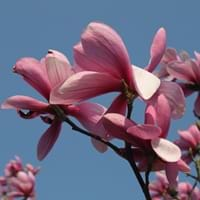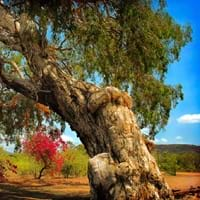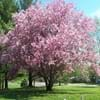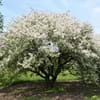Life Span
Perennial
Annual
Origin
Not Available
Southeastern Asia, Australia
Types
Not Available
Not Available
Habitat
Not Available
Warm and moist climatic conditions
USDA Hardiness Zone
6-9
9-15
Sunset Zone
3b, 4, 5, 6, 7, 8, 9, 14, 15, 16, 17, 18, 19, 20, 21, 22, 23, 24
H1, H2, 9, 12, 13, 15, 16, 17, 20, 21, 22, 23, 24
Habit
Oval or Rounded
Upright/Erect
Flower Color
Pink, Violet
Light Yellow, Light Pink, Ivory
Flower Color Modifier
Bicolor
Bicolor
Fruit Color
Red
Sandy Brown
Leaf Color in Spring
Light Green
Green, Dark Green
Leaf Color in Summer
Green
Dark Green
Leaf Color in Fall
Yellow, Yellow green
Dark Green
Leaf Color in Winter
Not Available
Dark Green, Plum
Leaf Shape
Oblong
Elliptic
Plant Season
Spring
Spring, Summer, Fall, Winter
Sunlight
Full Sun, Partial Sun
Full Sun, Partial Sun
Type of Soil
Clay, Loam, Sand
Clay, Loam, Sand
The pH of Soil
Acidic, Neutral
Acidic, Neutral, Alkaline
Soil Drainage
Well drained
Average
Bloom Time
Spring
Late Summer, Early Fall, Fall, Late Fall
Tolerances
Not Available
Wet Site, Pollution, Drought, Soil Compaction
Where to Plant?
Ground
Ground
How to Plant?
Seedlings, Stem Cutting
Seedlings
Plant Maintenance
Medium
Medium
Watering Requirements
Requires regular watering
Get enough water whenever the soil is dry
In Summer
Lots of watering
Lots of watering
In Spring
Moderate
Moderate
In Winter
Average Water
Average Water
Soil pH
Acidic, Neutral
Acidic, Neutral, Alkaline
Soil Type
Clay, Loam, Sand
Clay, Loam, Sand
Soil Drainage Capacity
Well drained
Average
Sun Exposure
Full Sun, Partial Sun
Full Sun, Partial Sun
Pruning
Remove all suckers, Remove damaged leaves, Remove dead or diseased plant parts
Remove damaged leaves, Remove dead branches, Remove dead leaves
Fertilizers
Fertilize in late fall, Requires high amount of nitrogen
All-Purpose Liquid Fertilizer
Pests and Diseases
Bacterial leaf spot, Canker, Leaf spot, Powdery mildew, Red blotch, Scale, Spot anthracnose, Thripes, Verticillium Wilt
Red blotch
Plant Tolerance
Not Available
Drought
Flower Petal Number
Single
Single
Fragrant Leaf
No
Not Available
Fragrant Bark/Stem
No
Not Available
Foliage Texture
Coarse
Fine
Foliage Sheen
Matte
Matte
Attracts
Birds
Birds, Hummingbirds
Allergy
Asthma
Not Available
Aesthetic Uses
Cottage Garden, Showy Purposes
Showy Purposes
Beauty Benefits
Not Available
Not Available
Environmental Uses
Air purification
Air purification
Medicinal Uses
Not Available
Antibiotic, Cough, Headache, hemorrhoids, Respiratory Disorders, Rheumatism
Part of Plant Used
Whole plant
Bark, Flowers, Leaves, Wood
Other Uses
Used as Ornamental plant
Used as essential oil
Used As Indoor Plant
No
No
Used As Outdoor Plant
Yes
Yes
Garden Design
Feature Plant, Shade Trees, Street Trees
Shade Trees, Street Trees, Tropical
Botanical Name
MAGNOLIA 'Galaxy'
MELALEUCA quinquenervia
Common Name
Magnolia, Magnolia Galaxy
Cajeput Tree, Paperbark Tree, Punk Tree
In Hindi
Magnolia Galaxy
Paperbark tree
In German
Magnolia Galaxy
Paperbark tree
In French
Magnolia Galaxy
Paperbark tree
In Spanish
Magnolia Galaxy
Paperbark tree
In Greek
Magnolia Galaxy
Paperbark tree
In Portuguese
Magnolia Galaxy
Paperbark tree
In Polish
Magnolia Galaxy
Paperbark tree
In Latin
Magnolia Galaxy
Paperbark tree
Phylum
Magnoliophyta
Magnoliophyta
Class
Magnoliopsida
Magnoliopsida
Order
Not Available
Myrtales
Family
Magnoliaceae
Myrtaceae
Clade
Angiosperms
Angiosperms, Eudicots, Rosids
Tribe
Not Available
Not Available
Subfamily
Not Available
Not Available
Number of Species
Not Available
Not Available
Importance of Magnolia Galaxy and Paperbark Tree
Want to have the most appropriate plant for your garden? You might want to know the importance of Magnolia Galaxy and Paperbark Tree. Basically, these two plants vary in many aspects. Compare Magnolia Galaxy and Paperbark Tree as they differ in many characteristics such as their life, care, benefits, facts, etc. Every gardener must at least have the slightest clue about the plants he wants to plant in his garden. Compare their benefits, which differ in many ways like facts and uses. The medicinal use of Magnolia Galaxy is Not Available whereas of Paperbark Tree is Antibiotic, Cough, Headache, hemorrhoids, Respiratory Disorders and Rheumatism. Magnolia Galaxy has beauty benefits as follows: Not Available while Paperbark Tree has beauty benefits as follows: Not Available.
Compare Facts of Magnolia Galaxy vs Paperbark Tree
How to choose the best garden plant for your garden depending upon its facts? Here garden plant comparison will help you to solve this query. Compare the facts of Magnolia Galaxy vs Paperbark Tree and know which one to choose. As garden plants have benefits and other uses, allergy is also a major drawback of plants for some people. Allergic reactions of Magnolia Galaxy are Asthma whereas of Paperbark Tree have Not Available respectively. Having a fruit bearing plant in your garden can be a plus point of your garden. Magnolia Galaxy has no showy fruits and Paperbark Tree has no showy fruits. Also Magnolia Galaxy is not flowering and Paperbark Tree is not flowering . You can compare Magnolia Galaxy and Paperbark Tree facts and facts of other plants too.





